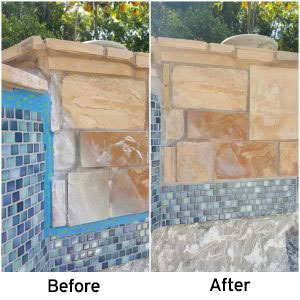Lime stains, sometimes called scale, occur around the upper edge of the pool and resemble deposits of white or gray crusts. They are often caused by hard water or minerals that seep from nearby mortar glue.
If left in place, they can lead to permanent stains on the tile, as well as causing the pool to look dirty and unattractive. Removal of calcium deposits from tiles in the pool will require some physical work.

Unfortunately, you will have to repeat the process periodically, as the spots often return.
Instructions
- Drain the water from the pool at least 6 to 10 inches so you can easily access areas stained with calcium. This also allows you to clean the loosened calcium off without depositing it in the pool water.
- Kneel on the edge of the pool, or enter the pool if you do not mind getting wet. Place a stiff brush bristle tiles on top of the calcium deposits and scrub the tiles of the pool using circular motions to loosen the deposits.
- Clean the tile of the pool with a cloth or a paper towel to remove the loosened calcium. Examine the area to see if all the deposit came off, and use a pumice stone to scrub gently with circular motions or no calcium is maintained.
- Remove the thickness scale from the tile with a razor blade, taking care to keep a low angle and avoid scratching the surface.
- Clean the area again with the cloth. Repeat the process to clean around the perimeter of the pool to remove the remaining calcium deposits.
Tips and warnings
- You can use a standard pumice stone available at beauty stores or buy one at a pool store that has a longer handle made specifically for pools.
- Commercial products are also available to remove tile incrustations from the pool.
